Stone, minerals and semiprecious of the world stone
Sulphate: Crocoite -->rus
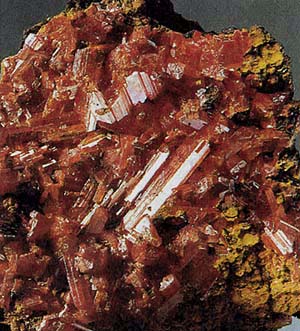 Diagnostic cart.
Diagnostic cart.
Pb CrO4
Crystal structure monoclinic
Hardness on the Mohs scale 2,5-3
Specific unit weight mass 6
Cleavage perfect absolute
Fracture, break padman
Colors red
Colors in powder triturate orange
Glance (glitter, glare) diamond

Crocoite (red leaden ore), is a chomate of lead. Glance (glitter, glare) fat, diamond; transparent. Colouring is bright reddish-orange (on a sun light fades). A line is orange. Fracture, break padman, uneven. Fragile. Cleavage clear. Appears in the area of oxidization of leaden ores. Crystals (monoclinic Crystal structure) are prismatic, columnar, basaltiform, needle-shaped, rarer dense aggregates. Collection mineral. Does not have commercial-size. Places of display: The CIS (Ural), Tasmania. Philippines, Brazil.
Forms the aggregates of needle-shaped crystals or prismatic strongly extended crystals (often with shading along lengthening), sometimes octahedral and rhombohedral individuals of beautiful orange-red or bright red color. It was first found out a mineral on Berezovskoye gold-mine in 1766 and was described mountain adviser Iogann Gotlib Leman. Light golden-orange, to red, crystals pointed, brilliant, translucent on edges - such were are first information about a crocoite. A rare orange secondary mineral consisting of lead chromate in monoclinic crystalline form. Formula: PbCrO4. Also called: red-lead ore.
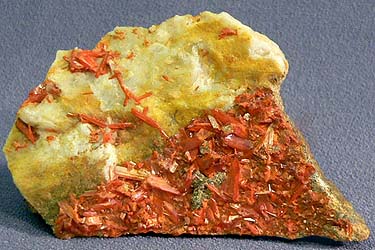 Name a crocoite originates from a greek word "crocus" that means a "saffron" . It reflects the color of stone - as a rule, orange-red.
Name a crocoite originates from a greek word "crocus" that means a "saffron" . It reflects the color of stone - as a rule, orange-red.
At the crystals of this mineral, which can arrive at 40 sm in size (on a deposit on an island Tasmania), columnar, basaltiform, needle-shaped form and characteristic diamond brilliance, dimming on a sun light.
A crocoite forms joint, junction and crystalline Druses often. mineral enough soft, his hardness - 2; 2,5.
Diagnostic indication.
On to light a crocoite is lost by brilliance and grow pale. Fusible and will dissolve in strong acids.
Origin provenance genesis.
This mineral is so rare, as far as beautiful. It appears in the area of oxidization of some deposits of lead, especially those, which are disposed among ultrabasic orthorocks, enriched a chrome. Be found in the area of weathering of sulfide deposits together with a vauquelinite, pyromorphite and other
Deposit minefield mine field occurrence subsoil.
Marked the finds of crocoite in Berezovskoe deposit (on Ural); Dandas on an island Tasmania (from here wonderful crystals act are prisms long to 15 sm); Goyabeyra, state of Minas-zherays in Brazil; Nontron in France; Mammot-Keyv in Arizona and district of In'o in California (USA). A crocoite does not have independent industrial application use and is sputnik satellite of leaden ores, but due to the rareness and beauty considered a valuable collection mineral.
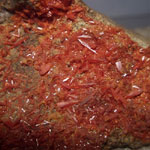
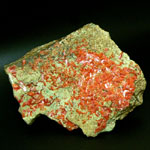
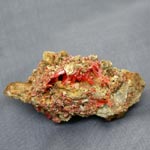
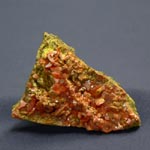
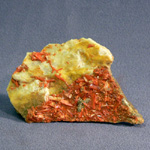
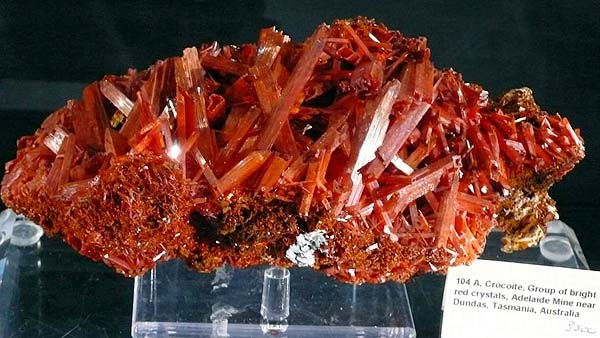
Crocoite. Adelaida, Dundas, Tasmania, Australia. Standard: Tuson-show-2007. A photo: © A.A. Evseev.
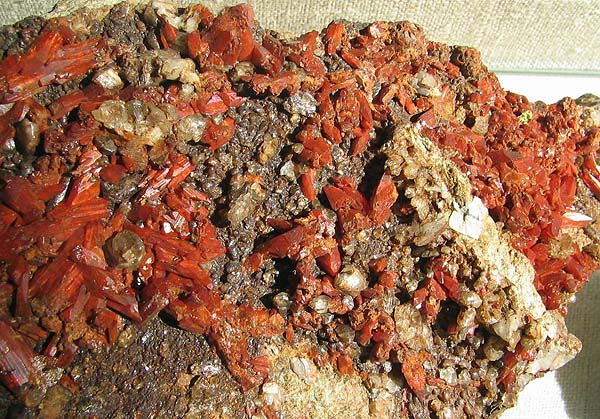
Crocoite - first new mineral, opened in Russia. Berezovskoe mine, Ural. A photo: © A.A. Evseev.
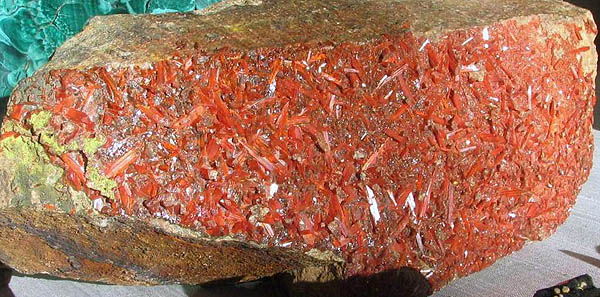
Crocoite. Berezovskoe mine, Ural, Russia. Crystals to 4 sm In the background is malachite (Ural). A photo: © A.A. Evseev.
